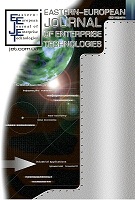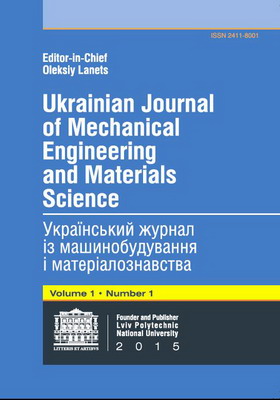
Бази даних
Наукова періодика України - результати пошуку
 |
Для швидкої роботи та реалізації всіх функціональних можливостей пошукової системи використовуйте браузер "Mozilla Firefox" |
|
|
Повнотекстовий пошук
| Знайдено в інших БД: | Реферативна база даних (4) |
Список видань за алфавітом назв: Авторський покажчик Покажчик назв публікацій  |
Пошуковий запит: (<.>A=Kovbasiuk T$<.>) | |||
|
Загальна кількість знайдених документів : 4 Представлено документи з 1 до 4 |
|||
| 1. | 
Vasyliv B. Estimation of the effect of redox treatment on microstructure and tendency to brittle fracture of anode materials of YSZ–NiO(Ni) system [Електронний ресурс] / B. Vasyliv, V. Kulyk, Z. Duriagina, D. Mierzwinski, T. Kovbasiuk, T. Tepla // Восточно-Европейский журнал передовых технологий. - 2020. - № 6(12). - С. 61-71. - Режим доступу: http://nbuv.gov.ua/UJRN/Vejpte_2020_6(12)__8 The effect of reduction treatment in a high-temperature (600 <^>o | ||
| 2. | 
Kovbasiuk T. Influence of heat treatment modes on the performance characteristics of resistive cermet coatings [Електронний ресурс] / T. Kovbasiuk, Z. Duriagina, V. Kulyk, E. Pleshakov, V. Kushpir // Ukrainian journal of mechanical engineering and materials science. - 2020. - Vol. 6, Num. 3-4. - С. 35-40. - Режим доступу: http://nbuv.gov.ua/UJRN/ujmems_2020_6_3-4_7 Dielectric and resistive coatings based on glass ceramics with nickel boride additives have been synthesized. It was found that the microstructure of the resistive coating consists of a large number of phases. X-ray fluorescence analysis revealed the presence of Ni and Cr borides in the structure of the resistive layer. It was found that the change in the structure and specific surface resistance of resistive pastes practically does not affect the temperature coefficient of resistance of the synthesized resistive tracks. | ||
| 3. | 
Kovbasiuk T. Determination the causes of premature destruction of sheet electrical steel [Електронний ресурс] / T. Kovbasiuk, Z. Duriagina, V. Kulyk, V. Kushpir // Ukrainian journal of mechanical engineering and materials science. - 2022. - Vol. 8, Num. 4. - С. 41-48. - Режим доступу: http://nbuv.gov.ua/UJRN/ujmems_2022_8_4_7 Sheets of electrical steel are produced by hot and cold working by pressure (mainly by rolling). In this case, the load during rolling should be chosen in such a way as not to impair the electrical properties of the steels. Received two sheets of electrical steel from different production batches. One of the sheets of electrical steel is prematurely destroyed at the stage of machining parts for electrical transformers. It has been established that an increased content of phosphorus worsens the characteristics of plasticity, which can complicate the process of pressure treatment in the manufacture of sheet electrical steel. Macrostructural analysis revealed longitudinal lines due to rolling. In places of greatest deformation, perpendicular to the direction of rolling, there are cracks and chipping of the insulating layer. Microstructural analysis showed that the cracks formed in the process of rolling sheet electrical steel propagate to a depth of 1,5 - 2,0 <$E mu>m. The presence of linear depressions in the structure of the sheet steel indicates that the critical overload has been exceeded during rolling. The increased microhardness in samples of electrical steel is explained by the increased concentration of macro- and microstructural defects formed during the rolling process. It has been established that the main reasons for the premature destruction of electrical steel sheets are an increased content of harmful impurities and incorrectly selected pressure treatment modes, leading to the formation of macrocracks. | ||
| 4. | 
Tepla T. Structure and properties of composite reinforcement with unidirectional fibers [Електронний ресурс] / T. Tepla, T. Kovbasiuk, I. Lemishka, M. Palchevskii // Ukrainian journal of mechanical engineering and materials science. - 2024. - Vol. 10, Num. 3. - С. 78-85. - Режим доступу: http://nbuv.gov.ua/UJRN/ujmems_2024_10_3_9 | ||
 |
| Відділ наукової організації електронних інформаційних ресурсів |
 Пам`ятка користувача Пам`ятка користувача |